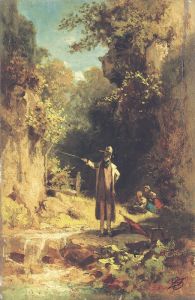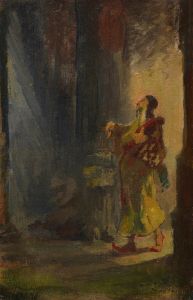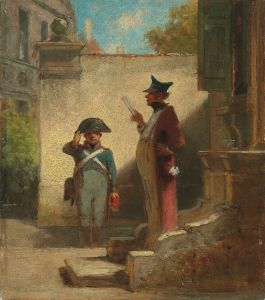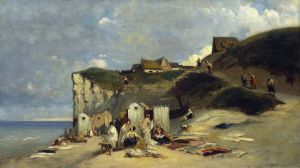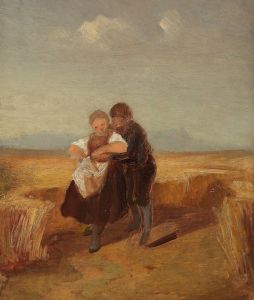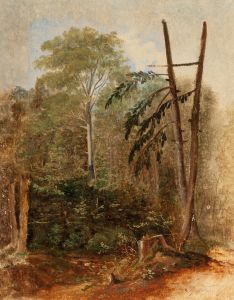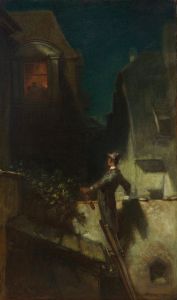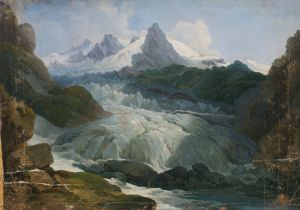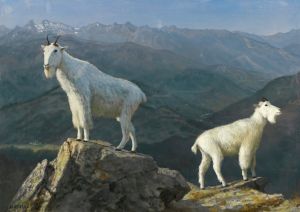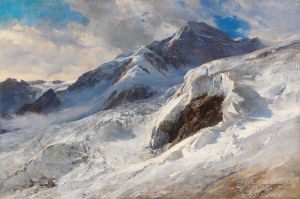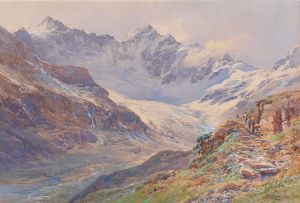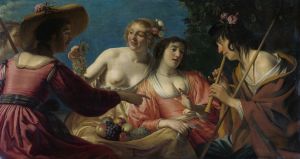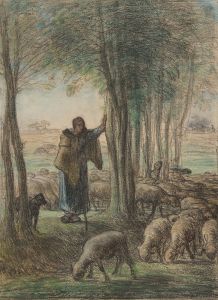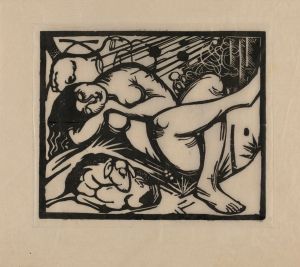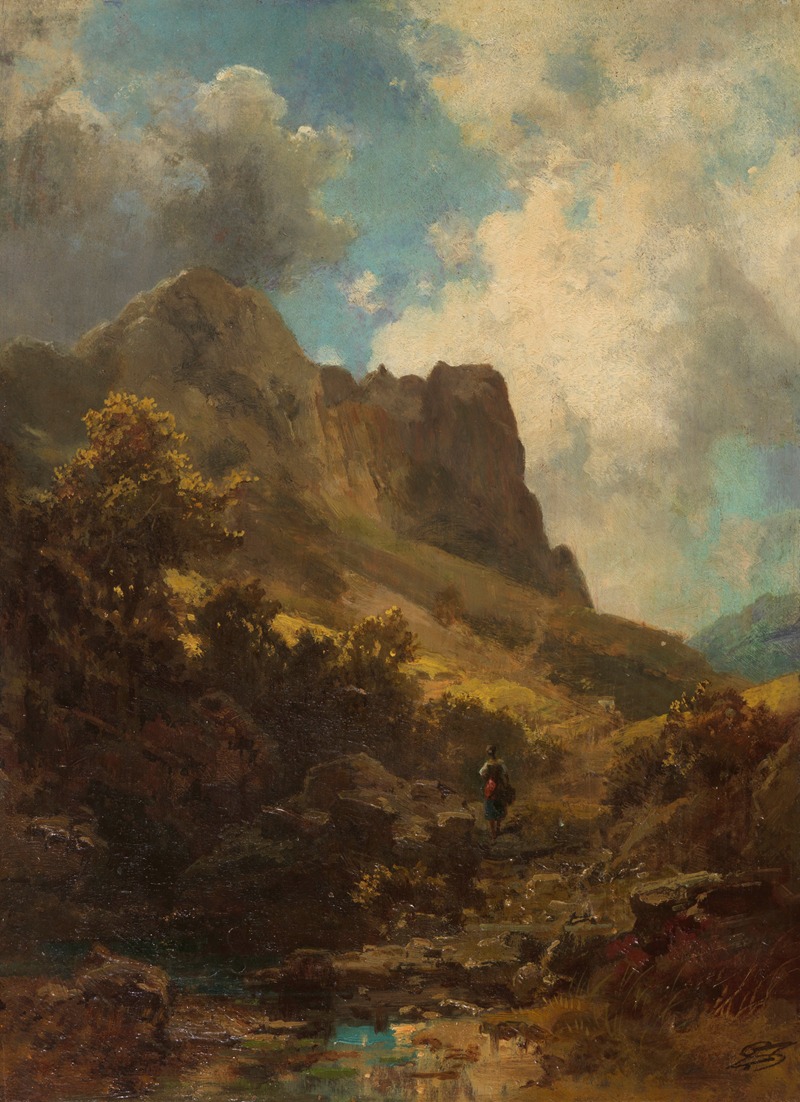
Talschlucht mit Sennerin
A hand-painted replica of Carl Spitzweg’s masterpiece Talschlucht mit Sennerin, meticulously crafted by professional artists to capture the true essence of the original. Each piece is created with museum-quality canvas and rare mineral pigments, carefully painted by experienced artists with delicate brushstrokes and rich, layered colors to perfectly recreate the texture of the original artwork. Unlike machine-printed reproductions, this hand-painted version brings the painting to life, infused with the artist’s emotions and skill in every stroke. Whether for personal collection or home decoration, it instantly elevates the artistic atmosphere of any space.
Carl Spitzweg was a renowned German Romanticist painter known for his detailed and often humorous depictions of everyday life. One of his works, "Talschlucht mit Sennerin," exemplifies his ability to capture the serene beauty of nature and the simplicity of rural life. Although specific details about this particular painting are limited, it is consistent with Spitzweg's broader oeuvre, which often features idyllic landscapes and quaint scenes.
Spitzweg was born on February 5, 1808, in Unterpfaffenhofen, Bavaria, and initially pursued a career in pharmacy before turning to painting. He was largely self-taught, drawing inspiration from the Romantic movement and the works of other artists such as Caspar David Friedrich. Spitzweg's paintings are characterized by their attention to detail, vibrant colors, and a gentle, often humorous portrayal of his subjects.
"Talschlucht mit Sennerin," which translates to "Valley Gorge with Dairymaid," likely depicts a pastoral scene set in a mountainous region, a common theme in Spitzweg's work. The painting probably features a sennerin, or dairymaid, tending to her duties amidst a picturesque landscape. This subject matter reflects Spitzweg's interest in rural life and his ability to find beauty in the mundane.
Spitzweg's work often includes elements of Biedermeier art, a style that emerged in Central Europe during the early 19th century. This style is characterized by its focus on the middle class and domestic life, often emphasizing comfort and simplicity. In "Talschlucht mit Sennerin," these elements might be evident in the depiction of the dairymaid and her surroundings, highlighting the peaceful coexistence of humans and nature.
Throughout his career, Spitzweg produced numerous paintings that captured the essence of 19th-century German life. His works often include a sense of narrative, inviting viewers to imagine the stories behind the scenes he depicted. This narrative quality, combined with his technical skill, has made Spitzweg a beloved figure in the history of German art.
Spitzweg's paintings, including "Talschlucht mit Sennerin," are celebrated for their ability to evoke a sense of nostalgia and tranquility. They offer a glimpse into a world that is at once familiar and idyllic, capturing the imagination of viewers with their charm and wit. His work remains influential, and his paintings are held in high regard by art historians and enthusiasts alike.
While specific information about "Talschlucht mit Sennerin" is limited, it is clear that the painting embodies the qualities that have made Spitzweg's work enduringly popular. His ability to blend humor, beauty, and narrative in his art continues to resonate with audiences, ensuring his place in the pantheon of great Romanticist painters.





